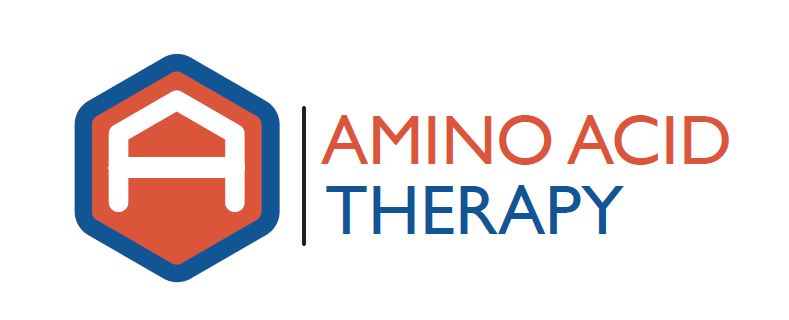by aatadmin | Mar 15, 2017 | Amino Acid Therapy, dopamine dominance, Neurotransmitters, Symptoms of Neurotransmitter Imbalance
 Part 1 of this series described what is occurring if someone is shown to have dopamine fluctuations on urinary lab testing. This post will describe the clinical implications of these dopamine fluctuations and how they can be properly managed. (more…)
Part 1 of this series described what is occurring if someone is shown to have dopamine fluctuations on urinary lab testing. This post will describe the clinical implications of these dopamine fluctuations and how they can be properly managed. (more…)
by aatadmin | Mar 1, 2017 | Amino Acid Therapy, dopamine dominance, Symptoms of Neurotransmitter Imbalance, Uncategorized
 It can be very confusing and concerning for a person to get a test back with a “Critical High” or some correspondingly high number reported for their dopamine value. Often times, this represents what is called a “dopamine fluctuation” and is actually a sign that something is stealing dopamine away from neurotransmitter synthesis that must be corrected. (more…)
It can be very confusing and concerning for a person to get a test back with a “Critical High” or some correspondingly high number reported for their dopamine value. Often times, this represents what is called a “dopamine fluctuation” and is actually a sign that something is stealing dopamine away from neurotransmitter synthesis that must be corrected. (more…)
by aatadmin | Feb 15, 2017 | Amino Acid Therapy, dopamine dominance
 Taking powders multiple times daily can be difficult, especially if/when one of those powders tastes a lot like pulverized chalk (i.e., tyrosine). We have hundreds of clients taking D5 Mucuna 40% powder and/or tyrosine (some at very high doses – 60+ grams of D5 Mucuna 40% and 10-12 Tbsp tyrosine powder daily) anywhere from three to six or more times daily. Several months ago we asked our clients how they mixed/took their powders; here is a compilation of their responses: (more…)
Taking powders multiple times daily can be difficult, especially if/when one of those powders tastes a lot like pulverized chalk (i.e., tyrosine). We have hundreds of clients taking D5 Mucuna 40% powder and/or tyrosine (some at very high doses – 60+ grams of D5 Mucuna 40% and 10-12 Tbsp tyrosine powder daily) anywhere from three to six or more times daily. Several months ago we asked our clients how they mixed/took their powders; here is a compilation of their responses: (more…)
by aatadmin | Feb 1, 2017 | Amino Acid Therapy, Neurotransmitters, Symptoms of Neurotransmitter Imbalance
 We help a lot of people resolve their symptoms related to neurotransmitter imbalances using amino acid therapy. Occasionally, a person whose symptoms have been under control for several weeks or months will find that their symptoms have returned. There are usually two common reasons for this. (more…)
We help a lot of people resolve their symptoms related to neurotransmitter imbalances using amino acid therapy. Occasionally, a person whose symptoms have been under control for several weeks or months will find that their symptoms have returned. There are usually two common reasons for this. (more…)
by aatadmin | Aug 25, 2016 | Amino Acid Therapy, Neurotransmitters
 Parkinson’s disease is a progressive neuro-degenerative disease. That is, the disease progresses as more and more neurons are destroyed. The ideal approach is to catch the disease as early as possible so that full function can be restored. This occurs when there are enough dopaminergic neurons remaining, that when given the proper amount and balance of amino acid precursors, are able to compensate for the damage.
Parkinson’s disease is a progressive neuro-degenerative disease. That is, the disease progresses as more and more neurons are destroyed. The ideal approach is to catch the disease as early as possible so that full function can be restored. This occurs when there are enough dopaminergic neurons remaining, that when given the proper amount and balance of amino acid precursors, are able to compensate for the damage.
However, without proper intervention, the neurodegenerative process will continue. If enough dopaminergic neurons are destroyed, no amount of amino acids will be able to completely restore proper function. Unfortunately, this often occurs when people with Parkinson’s disease attempt to exhaust all other options before implementing amino acid therapy. While these people benefit greatly from amino acid therapy, most do not achieve complete relief of symptoms due to the extent of the neurodegeneration.
Therefore, a person with Parkinson’s disease should implement a course of properly guided amino acid therapy as soon as possible to obtain optimal results. All other therapy options are associated with a progression of the disease. Unlike the medical approach of using L-DOPA/carbidopa, amino acid therapy needs to be implemented as early as possible to optimally manage the symptoms of Parkinson’s disease.
For more information on Amino Acid Therapy and Parkinson’s, click here.
 Part 1 of this series described what is occurring if someone is shown to have dopamine fluctuations on urinary lab testing. This post will describe the clinical implications of these dopamine fluctuations and how they can be properly managed. (more…)
Part 1 of this series described what is occurring if someone is shown to have dopamine fluctuations on urinary lab testing. This post will describe the clinical implications of these dopamine fluctuations and how they can be properly managed. (more…)
 It can be very confusing and concerning for a person to get a test back with a “Critical High” or some correspondingly high number reported for their dopamine value. Often times, this represents what is called a “dopamine fluctuation” and is actually a sign that something is stealing dopamine away from neurotransmitter synthesis that must be corrected.
It can be very confusing and concerning for a person to get a test back with a “Critical High” or some correspondingly high number reported for their dopamine value. Often times, this represents what is called a “dopamine fluctuation” and is actually a sign that something is stealing dopamine away from neurotransmitter synthesis that must be corrected.  Taking powders multiple times daily can be difficult, especially if/when one of those powders tastes a lot like pulverized chalk (i.e., tyrosine). We have hundreds of clients taking D5 Mucuna 40% powder and/or tyrosine (some at very high doses – 60+ grams of D5 Mucuna 40% and 10-12 Tbsp tyrosine powder daily) anywhere from three to six or more times daily. Several months ago we asked our clients how they mixed/took their powders; here is a compilation of their responses:
Taking powders multiple times daily can be difficult, especially if/when one of those powders tastes a lot like pulverized chalk (i.e., tyrosine). We have hundreds of clients taking D5 Mucuna 40% powder and/or tyrosine (some at very high doses – 60+ grams of D5 Mucuna 40% and 10-12 Tbsp tyrosine powder daily) anywhere from three to six or more times daily. Several months ago we asked our clients how they mixed/took their powders; here is a compilation of their responses:  We help a lot of people resolve their
We help a lot of people resolve their 
